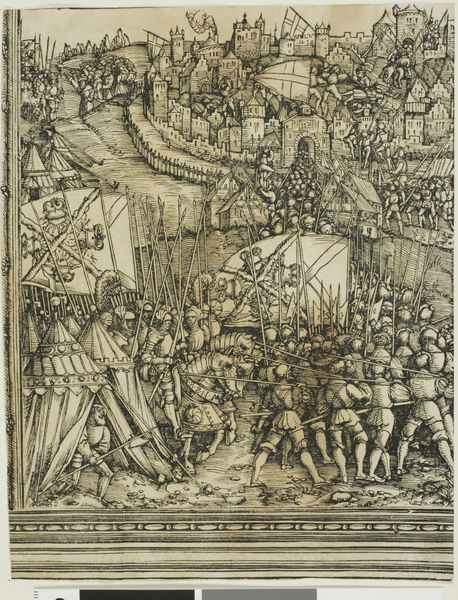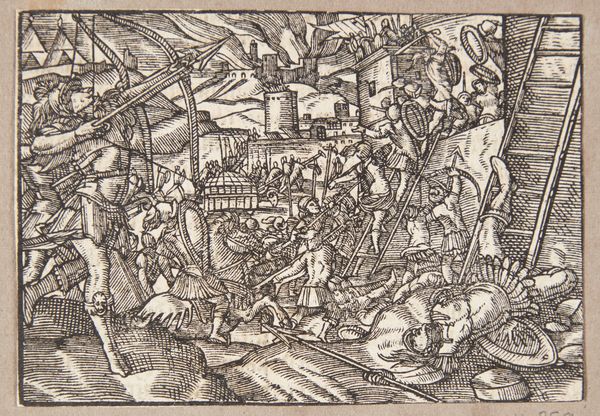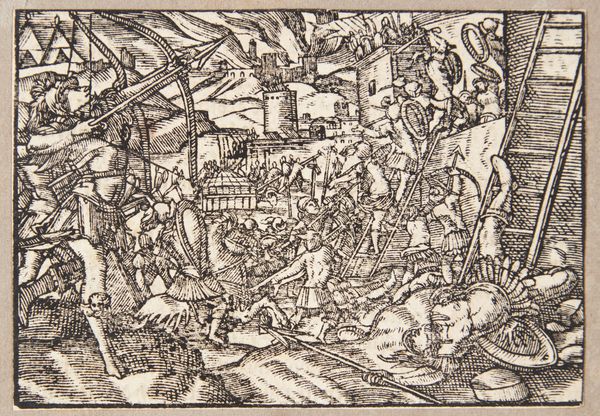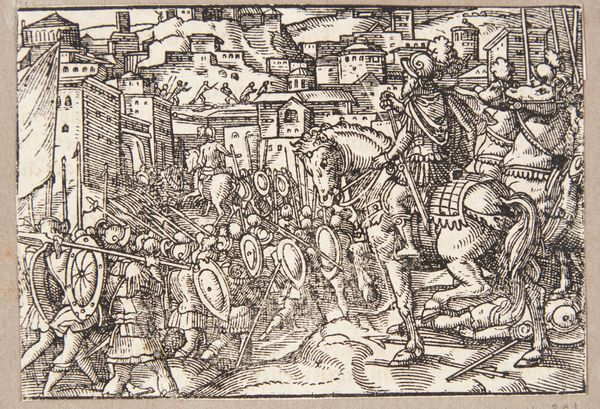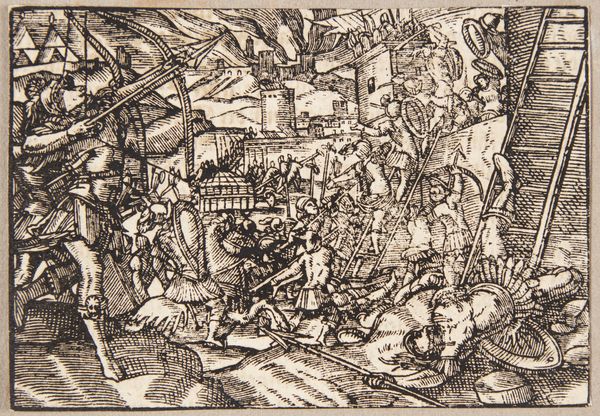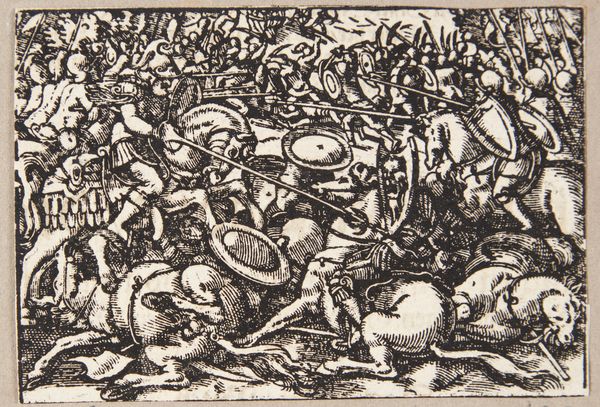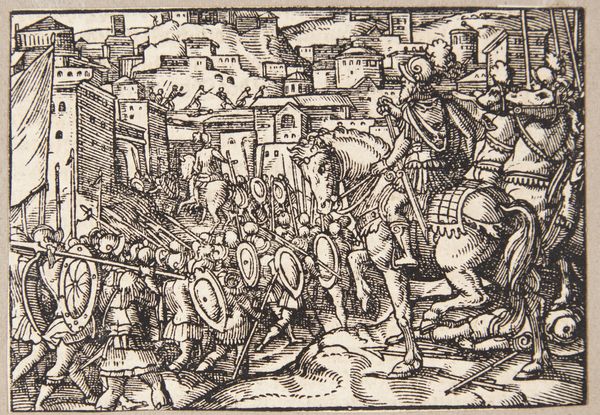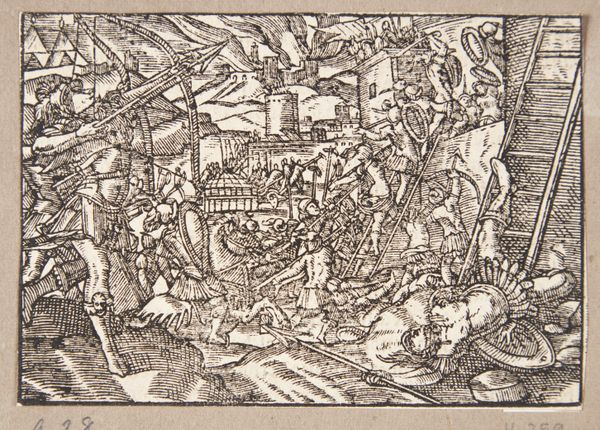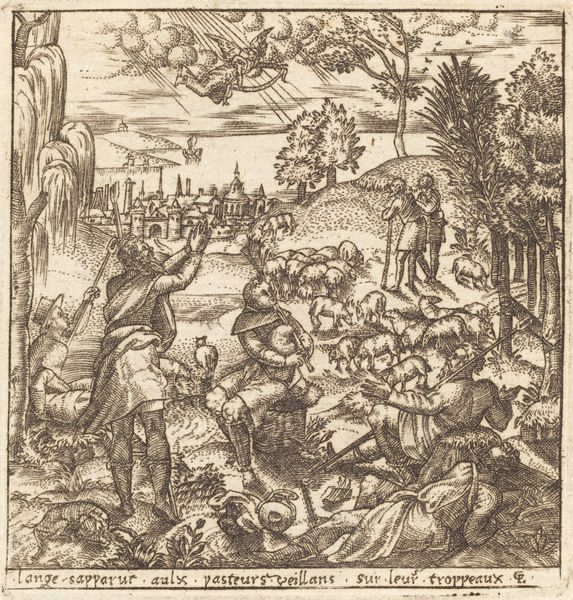
The War with Venice, from The Triumphal Arch of Maximilian I 1515 - 1517
0:00
0:00
drawing, print, paper, ink, woodcut, engraving
#
drawing
#
narrative-art
#
pen drawing
# print
#
figuration
#
paper
#
11_renaissance
#
ink
#
woodcut
#
history-painting
#
engraving
Dimensions: 190 × 161 mm
Copyright: Public Domain
Curator: Look at this fascinating woodcut titled "The War with Venice, from The Triumphal Arch of Maximilian I," created between 1515 and 1517. My immediate impression is of overwhelming energy, an incredibly active composition despite the static medium. The density of figures and the sheer linear detail… it's captivating, if somewhat claustrophobic. Editor: Indeed, a maelstrom rendered in miniature. One sees immediately the artist is aiming to showcase the military might and, implicitly, the political aspirations of Maximilian I. The print forms part of a larger propagandistic project designed to establish the emperor's legacy, projecting power and authority. It's all about crafting the narrative. Curator: The meticulous rendering of the armor, weapons, and even the city in the background contribute to this. Observe the incredible textures achieved through simple lines. The way light and shadow play across the battlefield is masterful in creating depth, despite the relatively flat perspective. Editor: And note the symbolism imbued in the flags, emblems, and the very architecture. The "Triumphal Arch" itself is designed as a cultural artifact laden with imperial ideology. Each element strategically placed to broadcast messages of strength and legitimacy during a particularly turbulent period of Venetian-Habsburg relations. Curator: Precisely. Focusing on the formal qualities, consider how the composition is structured – layers upon layers pushing the eye back to the hazy landscape above. All those diagonals create an incredibly dynamic, almost unsettling experience, that clashes with the grounded horizontals above and below, confining all of this frantic movement. Editor: The aesthetic, in this context, reinforces the historical narrative. Maximilian wasn't simply winning battles; he was solidifying an image. And in commissioning artworks like this for wide distribution via prints, it created not just an aesthetic impact, but very real sociopolitical ones, as images of rulers began to disseminate across society like never before. Curator: Thinking about it now, those formal constraints, so perfectly constructed, mirror Maximilian’s political control, doesn’t it? Fascinating! Editor: Absolutely. By analyzing it this way, we unveil some important and fascinating dimensions, looking beyond aesthetics into socio-political ramifications.
Comments
No comments
Be the first to comment and join the conversation on the ultimate creative platform.
